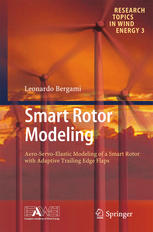

Most ebook files are in PDF format, so you can easily read them using various software such as Foxit Reader or directly on the Google Chrome browser.
Some ebook files are released by publishers in other formats such as .awz, .mobi, .epub, .fb2, etc. You may need to install specific software to read these formats on mobile/PC, such as Calibre.
Please read the tutorial at this link: https://ebookbell.com/faq
We offer FREE conversion to the popular formats you request; however, this may take some time. Therefore, right after payment, please email us, and we will try to provide the service as quickly as possible.
For some exceptional file formats or broken links (if any), please refrain from opening any disputes. Instead, email us first, and we will try to assist within a maximum of 6 hours.
EbookBell Team

4.1
70 reviewsA smart rotor is a wind turbine rotor that, through a combination of sensors, control units and actuators actively reduces the variation of the aerodynamic loads it has to withstand. Smart rotors feature promising load alleviation potential and might provide the technological breakthrough required by the next generation of large wind turbine rotors.
The book presents the aero-servo-elastic model of a smart rotor with Adaptive Trailing Edge Flaps for active load alleviation and provides an insight on the rotor aerodynamic, structural and control modeling. A novel model for the unsteady aerodynamics of an air foil section with flap is presented and coupled with a multi-body structural representation. A smart rotor configuration is proposed, where the Adaptive Trailing Edge Flaps extend along the outer 20 % of the blade span. Linear Quadratic and Model Predictive algorithms are formulated to control the flap deflection. The potential of the smart rotor is finally confirmed by simulations in a turbulent wind field. A significant reduction of the fatigue loads on the blades is reported: the flaps, which cover no more than 1.5 % of the blade surface, reduce the fatigue load by 15 %; a combination of flap and individual pitch control allows for fatigue reductions up to 30 %.